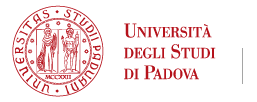
Guidelines
Fly Facility General Rules and Regulations
1. Only authorized persons are allowed access to the Drosophila Facility:
it is therefore forbidden to introduce unauthorized persons without
first contacting the managers of the Center (Mauro Zordan, Gabriella
Mazzotta, Federica Sandrelli, Cristiano de Pitta’, Paola Cisotto).
Furthermore, the visit of underage students to the Fly Facility must be
made known beforehand to the managers of the Facility, and appropriately
organized.
1. Access to the Facility is allowed only for groups with a financed project,
in which adequate resources are provided for this service. Only the
personnel indicated in the financed project request will be admitted to
the Drosophila Facility.
2. It is mandatory, to attend a specific course for Drosophila handling,
periodically held at the Department of Biology.
3. Tutors must periodically inform the Facility Manager about additional
students, who will be directed to the training course, held by Dr. Paola
Cisotto.
4. Bachelor degree students are allowed access to the Facility only if accompanied
by their tutor.
5. Before and after handling Drosophila cultures, hands should be washed
with soap and water.
6. All users are required to monitor the health status of their fly cultures.
All cultures presenting symptoms of disease must be promptly eliminated,
in agreement with the Fly Facility personnel (see Detailed Rules
and Regulations).
7. Do not leave fly-containing vials completely unattended for long periods
of time, especially if left on the work bench.
8. The yellow container for sharp objects should only be used for needles
and sharp objects and not for pipettes and micropipette plastic tips.
IT IS EVERYBODY’S DUTY TO ENSURE THAT THESE RULES
ARE RESPECTED AND ANYONE PRESENT DURING AN INFRINGEMENT
WILL BE CONSIDERED EQUALLY RESPONSIBLE.
2 Detailed Rules and Regulations
2.1 Fly Facility instruction
Everybody must take a fly instruction course in order to be allowed to work in
the Fly Facility. To arrange for this, contact Paola Cisotto (cisotto@bio.unipd.it).
For short-term workers (undergraduate students, summer students etc.), instructions
take about 20 minutes. For longer-term workers (graduate students,
postdocs etc.), they take about 40 minutes.
2.2 Label fly trays
It is fundamental for us to know who is responsible for every tray in the Fly
Facility incubators. All trays should have a label with name, email, research
group (or supervisor) and the date of the oldest fly culture (tube, bottle) in
the tray.
2.3 Do not allow your fly cultures to age
Old fly cultures can easily become infested with mites. Mite infections can
delay ongoing experimental work (your own, but sometimes that of others
too). Be active in preventing mite infestations by following these rules:
• Fly cultures in the 23o C incubator should NEVER be more than 20
days old.
• Fly cultures in the 18o C incubator should NEVER be more than 40
days old.
Fly culture rooms and incubators are inspected regularly and all trays
containing fly cultures 20 days old or older (at 23o C), or 40 days or
over (at 18o C) will be removed. Such trays will remain in separate
custody for a short while and then discarded. So, remember to transfer
your flies into a new container before the culture gets too old.
2.4 Don’t allow your flies to escape
Flies should not escape from the lab. You should be active in trying to avoid
this. Handle flies so as to minimize the chance of flies escaping, and you
should always be aware of what happens to your flies (larvae, pupae and
embryos included). All unwanted flies should be autoclaved or submerged in
alcohol.
2.5 All new fly stocks should be quarantined
To avoid introducing mites or other parasites/infectious agents into the Fly
Facility, all new fly stocks should be quarantined for at least 2 generations
(arrange for this with the Fly Facility personnel).
2.5.1 Check the complete procedure under "Mite Infestations"
2.6 Safety
You should be familiar with the Standard Safety Procedures and Control Of
Hazardous Substances associated with any work you do in the Fly Facility.
If in doubt, consult the Fly Facility personnel.
2.7 Always clean up
When you have finished working in the Fly Facility, please:
• Return your flies to the incubator;
• Return your unused fly food to the refrigerator;
• Return your fly tools to the designated container;
• Discard what you don’t need appropriately;
• Wipe the area where you have been working using denatured alcohol;
• Replace the cover on the dissecting microscope(s);
• Clear your space whenever you leave the Fly Facility, unless you plan
to return shortly.
2.8 Where to dispose of things
2.8.1 Unwanted flies:
Place unwanted flies into the fly morgue; there is one on the bench.
2.8.2 Used glass fly bottles:
The bottles are autoclaved, washed and re-used.
• When you have finished with a fly tray, it will be washed and reused.
You should change your fly trays regularly to help keep the fly culture
rooms clean and and avoid mites.
• Used plastic: Used plastic fly tubes and collection plates (petri dishes)
go into the designated bin. They will be autoclaved and discarded.
2.8.3 Broken glass:
Put broken glass into the glass disposal bin. Please make every effort to
prevent flies escaping from the glass disposal bin.
• Cardboard/paper etc.: These materials go into the designated waste
paper trolleys present at the entrance to each floor of the Vallisneri
building.
2.9 Before you leave the Facility
If you are the last to leave the Facility in the evening or during the weekend
you should:
• To turn off the CO2, turn the tap on top of the canister all the way
clockwise. Do not turn the pressure regulator!
• If there is no one in the lab when you arrive, you may need to turn
on the supply by slightly turning the tap on top of the canister anticlockwise.
• Switch off the lights.
2.10 Mite infestations and quarantine procedure
2.10.1 Mite description
One of the most important risks to Drosophila cultures are mite infestations.
Some mite species live and reproduce on flies’ food, others live off fly embryos
and pupae, and can lead to VERY SERIOUS damage to a fly lab. Even
mites which live off food can increase in number very quickly (many are
parthenogenetic) and can destroy fly stocks. Adult mites are smaller than a
Drosophila embryo, thus they can be difficult to detect. In older Drosophila
cultures, they can be found around the empty pupal cases. Mite embryos
are even smaller and form strands consisting of a few tens of eggs between
Drosophila pupae.
2.10.2 Mite control
Mites are ubiquitous, so it is important to be very careful in order to keep
Drosophila cultures free of mites. Follow these precautions as an effective
way of controlling mites:
• All new Drosophila stocks should be quarantined. Any new
stocks that enter the lab need to be kept isolated from the main stocks
for at least 2 generations.
• Fly stocks should be transferred regularly Most mite species that
infect Drosophila cultures have a life cycle that is slightly longer than
that of the fly. If the flies are transferred soon after they eclose, the
mites will not have the chance to complete their life cycle and so should
not be able to efficiently invade the fly stock.
• Keep the fly lab clean. Mite species reproduce efficiently on the
debris which can accumulate in fly incubators and around the fly lab.
It is important to clean all equipment that comes into contact with
flies and fly cultures. Mites and their eggs can be killed by ethanol,
so wipe your microscope, bench, CO2 pad and brushes with ethanol
before and after you handle your flies.
2.10.3 Should you find mites in your cultures.
If you discover mites in one of your stocks you should:
• Immediately remove the infected vial from the lab, seal it in an autoclave
bag and have it autoclaved as soon as possible.
• Carefully control all fly vials that were in contact with the infected
vial, and discard any that also become infected.
• Clean everything that has been in contact with the infected vial with
ethanol, including the container in which the flies were kept, the area
where you worked with the flies and any tools you used to work with
the flies.
• It is important to inform the Fly Facility staff. If your mite-infested
fly stock is irreplaceable, you can attempt to rescue it. This must be
done in the fly Isolation/Quarantine area.
1. How to attempt to rescue a mite infested fly culture
• Select ~5 pairs of flies that have been checked for mites or mite
eggs and place them in a clean vial.
• Transfer the flies to new food 3 times, once every 2 days, and keep
only the last vial.
• Monitor the rescued stock for at least 2 generations (follow the
quarantine procedures described below) to ensure that it is mitefree.
IMPORTANT: If you are unsure what mites look like or would like
confirmation that your cultures are mite-free, please ask a member of
the Fly Facility staff or some other experienced fly worker.
2.10.4 How to quarantine new Drosophila stocks
To guard against mites, all flies coming into the lab from other labs or stock
centres must go directly to the Isolation/Quarantine area and remain there
for at least 2 full generations.
1. Suggested procedure:
• Write the arrival date on the fly vial you have just received.
• Transfer any adults, or the first flies that eclose, into a fresh vial.
Keep the original vial for at least 3 weeks.
• Periodically inspect it, under a dissecting microscope, to check for
the presence of adult mites and/or mite eggs especially around the
pupal cases.
• When it is clear that your new culture is growing well, discard
the adults and allow the F1 adults to develop. Inspect the vial
regularly for the presence of mites or other problems e.g. fungal
or bacterial growth.
• Transfer some F1 adults to a new vial. When this culture is
growing well, discard the F1 adults and allow the F2 generation
to develop. Regularly inspect the tube for mites etc.
• If no mites were seen in the original vial or any of the subsequent
vials then some F2 flies can be transferred into a new vial and
brought into the main lab.
• If mites are detected at any time you can attempt to rescue the
stock by selecting a small number of mite-free flies and performing
rapid transfers (as described above). You must then repeat the
full quarantine procedure.
IMPORTANT: If you are unsure what mites look like or would like
confirmation that your cultures are mite-free, please ask a member of
the Fly Facility staff or some other experienced fly worker.





